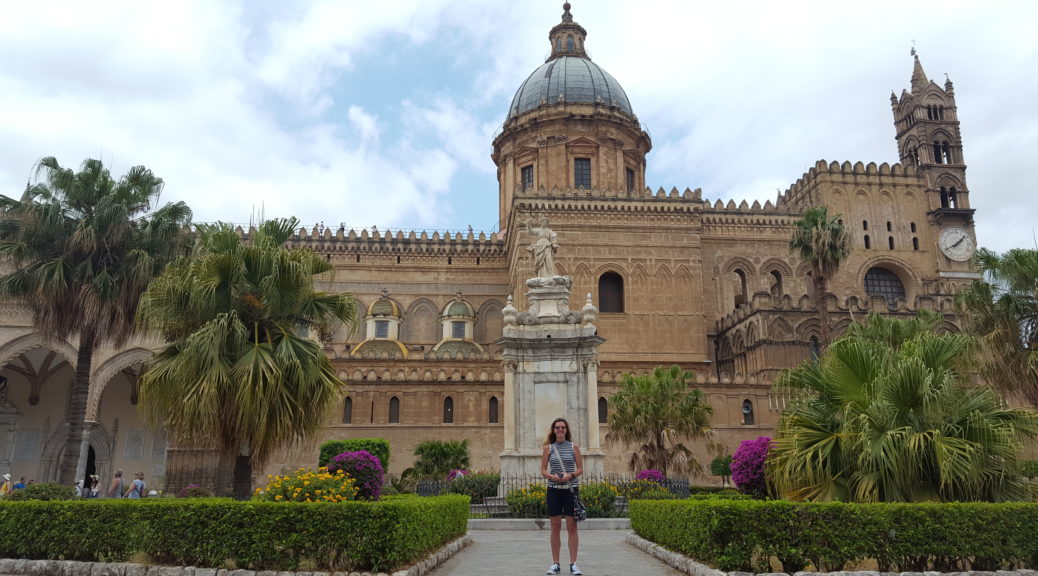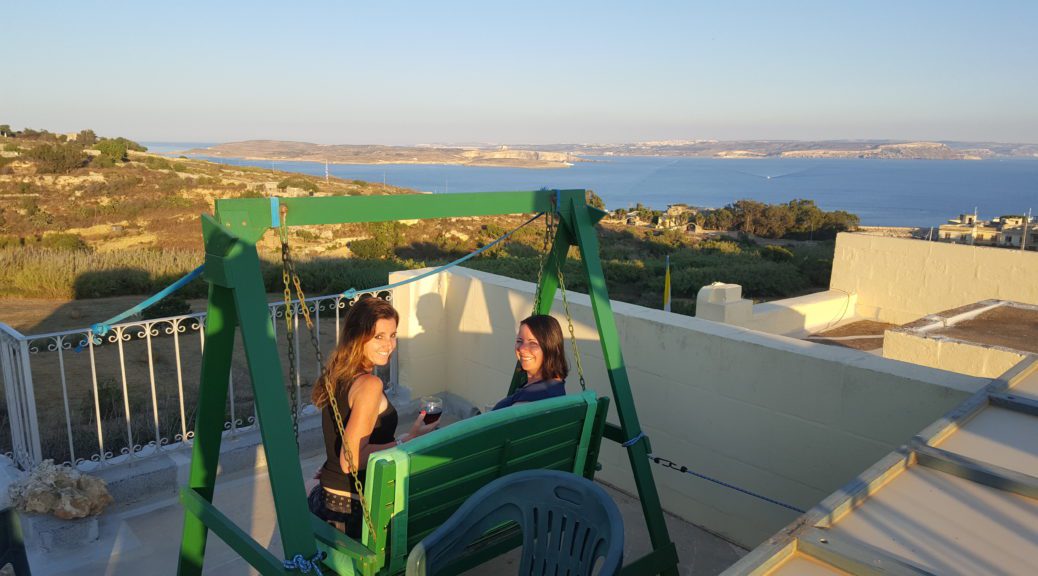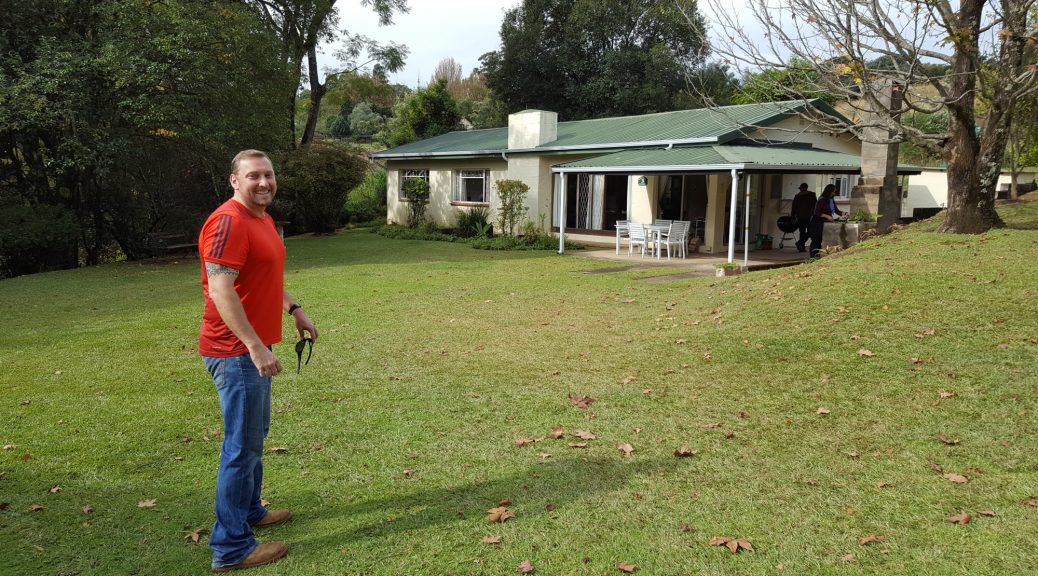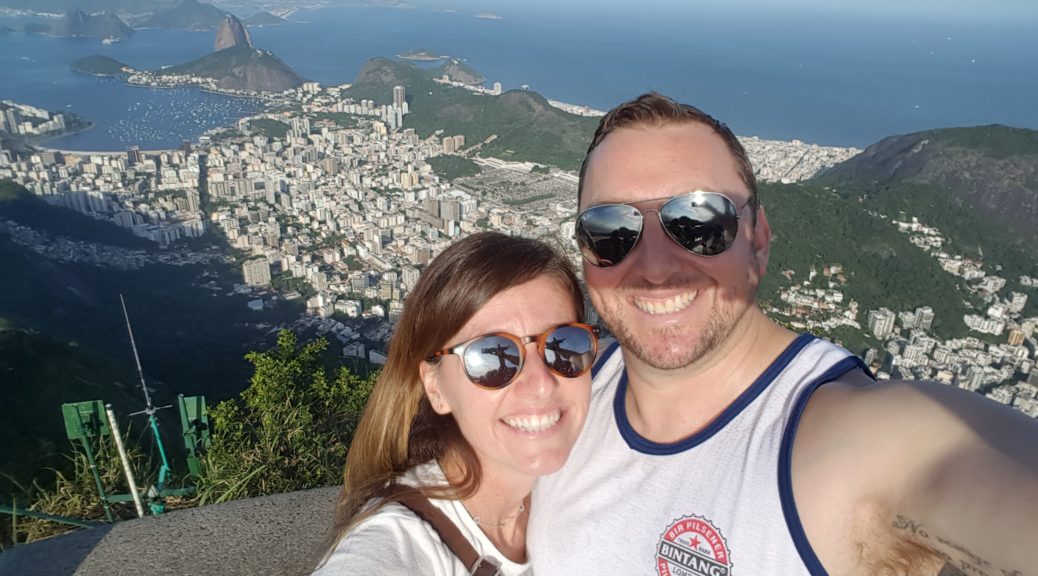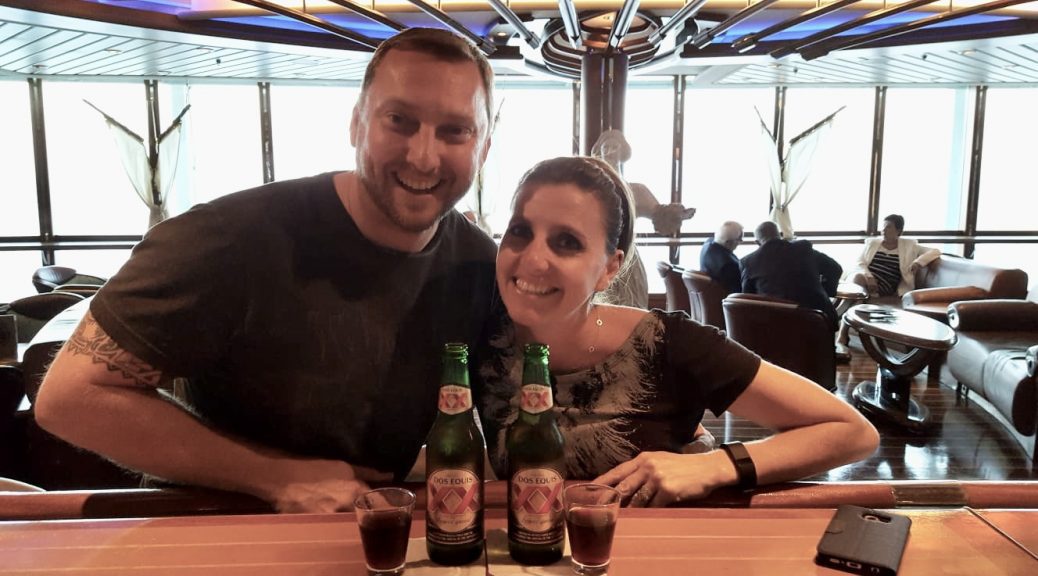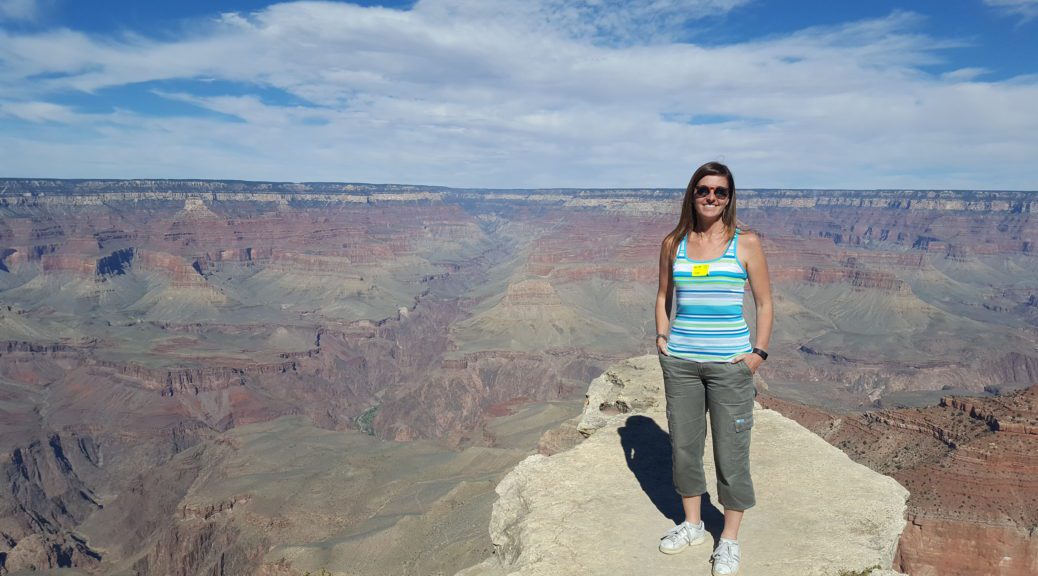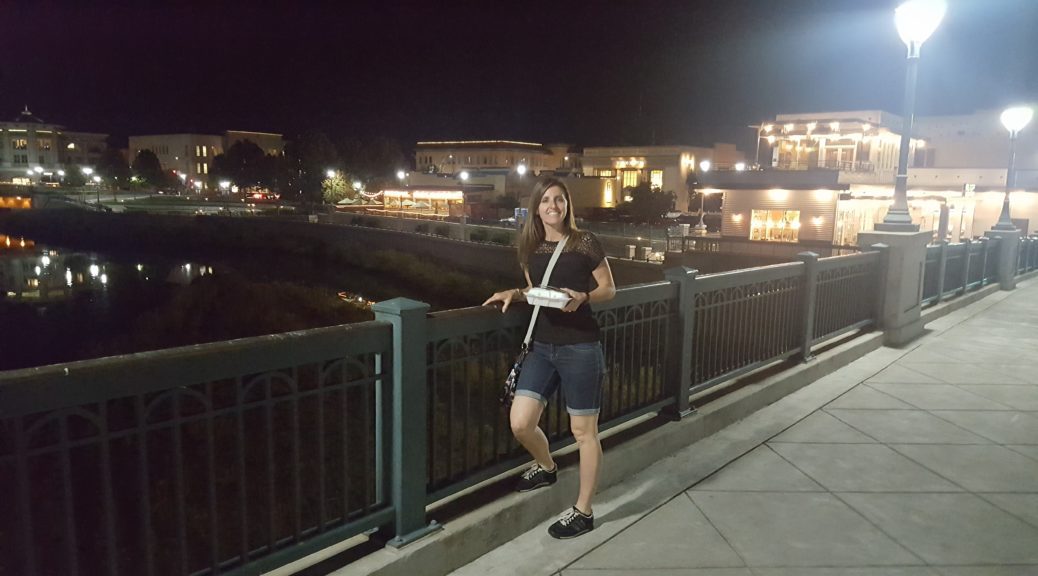RIO DE JANEIRO
22-27 April 2017
We landed into a rainy Rio de Janeiro with a runway ride so long we thought we might be getting door-to-door service to our hotel!
Among the first to disembark (we were in the first cabin behind Business Class), a hot-hoofing to Passport Control had us walking straight up to the counter for a quick stamping and on to collect our luggage… which was already waiting for us on the carousel. Never have we ever!
The chap at the Info desk was very helpful and scoffed at the taxi companies heckling for our business, saying that the bus ride was only 10 minutes longer for a quarter of the fare. Obviously reading our skeptical indecision, he came out from behind the counter and chaperoned us outside to the bus stop where, as further luck would have it, the bus (actually a luxury coach) was already waiting. We welcomed the return to aircon after the handful of steps in the wall of humidity that hit as we left the airport building.
A few minutes later we were off on what turned out to be a 45 or so minute ride along the highway from the airport and then through the docklands on the coastline that winds around to our ultimate destination – Copacabana.
First impression of Rio was that was massive and had more than its fair share of grimy buildings and graffiti. Lots and lots of graffiti, everywhere. First impression of Copacabana was that it was a holidaymaker paradise; a 4km concave crescent of perfect golden sand with circular take-out shacks and cheerful cafe tables splayed periodically. You easily could get sustainably fed and watered without ever having to leave the beach. Lined with palm trees on the beach side and towering apartment and hotel blocks on the other and with hawkers peddling hats and crafty jewellery from mats on the promenade, it was not dissimilar to old world Durban.
The bus dropped us right at our door, at the Orla Copacabana at the very end of the beach, which we’d chosen for its location. With Ipanema Beach a mirrored 4km concave crescent to Copacabana’s, the 2 side-be-side formed a sort of wide “m”; our hotel was on the beachfront just off to the Copacabana side of the middle stalk, with easy access to both beaches.
Our hotel was also nice enough. The room had space for little more than the double bed and ergonomically-shrewd en-suite… which was really all we needed. Rooftop pool and fitness centre (with sauna!) and breakfast in the dining room from 6-10 a.m.
Dying to get out to See and Do, we did the bare minimum and exchanged jeans for shorts so as to get out to make the most of the setting sun.
Passing the Copacabana Fort, we headed to Ipanema Beach and were soon on the trademark black and white zigzag pattern sidewalk that runs the length of the wide promenade.
The beach was busy; prime time with both day-timers calling it a day and night-timers coming out to play. With the searing sun starting to cool, the footvolley (hybrid of football and volleyball) players were out in full force on the permanent volleyball courts set up on the beach sand. We sat at one of the many beachside cafés and watched them play, sipping on an ice-cold Itaipava beer (while most around us were enjoying cocktails from straws extending from the inside of fresh coconuts).
Having acquired a local sim card at the airport, we used our sundowners time to start planning the next few days. In among our research, we discovered not one but two Irish pubs in the vicinity so thought it best to tick off the Guinness Index sooner rather than later.
That took us to Shenanigans (2 roads inland from the beach strip). Which had no Guinness, on tap or otherwise! We stayed for a beer (Brahma) to be polite – mostly because you have to check in, where you give your name at the door in return for a barcoded card, which is reconned when you leave to make sure you’ve paid your bill. Very clever.
On our way back towards the beach we passed a very lively local pub/restaurant/café, so decided to try our hand at local fare. First surprise was that beers are served as 600ml bottles, in a wine cooler sort of thing, with caña-style thimble glasses. The menu was quite difficult to navigate, even with the English translations, but we settled on a Bacalhau (cod) balls and a meat pie and a cheese pie to share. All to the dulcet soundtrack of about 30 locals’ ups-and-downsing to a local football game on the telly. Very festive.
With a long day of travel and our bodies thinking it was 3am, we ambled back to the hotel to get a shouldn’t-be-taken-for-granted 8 hours horizontal in an actual bed!
SUNDAY – Copacabana
We awoke to a rainy Rio. This was not on the agenda but, fortunately having checked the weather report before we left, we had our travels brollies so it wasn’t a game-ender.
On the upside, the hotel breakfast was far better than we’d anticipated so, after a leisurely multi-course of yoghurt & fruit, pancakes & bacon and cheeses, cold meats and bread, we were well fuelled to take on the miserable day.
We shimmied past the large cluster who had gathered in a forlorn group under the large awning at the hotel entrance, staring into the rain and at the sea beyond, willing the rain to stop… smug that we had packed our Baltic umbrellas and could brave the elements.
It was more of a drizzle than actual rain and it was clear that it didn’t dampen the locals’ spirit at all. Copacabana had triple car lanes in either direction with the dividing island dotted with petrol pumps. There was then also a dedicated cycle/skate/running lane that was the same width as a car lane, also with the painted line in the middle to regulate movement in either direction. And the pavement was a good 6 or so metres wide, also with the same distinctive vibrant black and white brick pattern and Ipanema’s.
Rain or no rain, there were people walking, running, cycling and skating not only on the dedicated areas but also the car lanes closest to the beach were closed off for pedestrian use as well – possibly a Sunday measure to cope with the swells of people that must flock to the beach in good weather.
There were also swarms of people utilising the numerous beach sports setups; footvolley courts, soccer goalposts, Muscle Beach style permanent gym equipments. And we caught a parade of sorts with a singer belting out what sounded like a Portuguese version of “Heal the World” from a slow-moving stage truck, cavalcaded by hundreds of bikers. Quite a spectacle.
We ambled along the length of the beach, stopping to take pictures of some of the many fun statues, to grab refreshments and to put brollies up… and then put them away again as the drizzle stopped and started. The fanciest hotels look to be in the middle of the beach while the end of the beach, a section called Leme, appears the most modest, catering for bus loads of locals migrating for a day at the seaside. There is a walkway carved into the rock wall at the end of the beach that protrudes into the sea which homes the local fisherman.
For our walk back, we moved a block in for a difference experience. We’d no sooner mentioned that we should look for a local soccer jersey for Christian and a pair of Havianas for me than we found a shop on the left for him and the right for me! Another block down and we realised that it was less serendipity and more that we were after local commodities, available almost literally everywhere!
There were also (more) bars and restaurants along the inner road, all quite buzzy and busy; Sunday must be a big day for socialising in Rio.
With the rain starting up again we thought, still being full from breakfast, we’d hunt down The Clover (the other Irish Pub that had come up on our search) to find the elusive Guinness to add to our Index. We found that there was an Irish Pub near to where we were looking, but called The Lucky Screw.
No Guinness on tap, but they did have cans so we ordered one anyway. When seeking a second round, the bar lady revealed she only had one can left, which we ordered anyway to share. Good thing too because when we settled the bill, we found to our horror that the Guinness was $R56 a can… ZAR266!!! …making it the most expensive Guinness we’ve had anywhere in the world – a full ZAR110 behind 2nd place, which we had had on our adventures in Copenhagen.
Reeling a bit from the shock, we moved back to the shopping street to find somewhere cheap and cheerful to numb the pain. We spent the rest of the afternoon wandering around, pub-hopping as we found places of interest and absorbing Rio’s famous snacking culture in some of the more “authentic” places we tried.
We’d snacked so much in fact that we’d eliminated the need for dinner, so when we’d had our fill of the nightlife, we retired to our hotel to relax, watch telly and order room service.
Not in the mood for anything fancy or too filling, we ordered from the extensive “Sanduiches” menu (a staple on all Rio menus, from what we’d seen) and I was delighted with my open steak (“contra-filé” which we surmised to be sirloin) sandwich, a lightly peppered juicy piece of medium rare steak on a bed of two slices of toast completely hidden beneath a generous layer of melted yellow cheese. We were both pleased to see a half plate of golden fries as the accompaniment as we’d noticed that in all the menus we’d seen over the course of the afternoon, chips are hellishly expensive, averaging ZAR90 a plate, which is the same – or in some cases more – than the burger / sandwich!
MONDAY – Centro
The plan for the day was a walking tour that was to depart from Carioca Square at 10h30.
With plenty of time to get there, we decided to try public transport instead of getting a taxi. The front desk of the hotel guided us to the nearest Metro station; an easy walk down the road that ran next to the hotel and then right at the last road before Ipanema Beach, with the Metro entrance unmissably positioned next to a small park.
Getting a ticket was easy enough since the options were very limited – a single or a reloadable card. We got a single, popped it into the turnstile, panicked when it wasn’t returned, appreciated the assuring head-nod from the security attendant, moved through the turnstile and were greeted with our train already at the platform waiting for us.
The train was packed – probably not unusual for a Monday morning – but not unpleasant. All those people but no BO and surprisingly little noise. Perhaps the locals are resigned to public transfers because it was one of the longer short journeys we’ve been on, with the train making several inexplicable stops which gained no expression from the locals so we concluded must be the norm.
We surfaced at Carioca Station onto the Square where the walking-tour guides were already waiting at the statue with the clock, exactly as expected.
We were introduced to our guide, Eden, a 25 year old Israeli girl currently living in Rio with her fiance, a Brazilian native. The first thing she explained to us was the meaning of the word Carioca which literally translates to “house of the white people”. This was so named by the indigenous Amazonian descendants for the Portuguese who moved to Rio and built white houses. But more colloquially now is used with reference to anything to do with the inhabitants of Rio (so covers those not originally from Rio, like Eden).
She then went around the group members, asking them to introduce themselves with their name and where they were from. The girl just before us was from Cape Town; the rest a combination of European (Germany, Denmark, Switzerland), England and a lone other Southern Hemispherean from new Zealand. As we began the tour, we quickly distanced ourselves from the Capetonian after hearing her excitedly telling one of the other group members that she’d just come from Argentina and it was so different to Brazil that they were like 2 separate countries. DOH!
Eden’s narrative for the tour was one long Story of Rio, which began with the Portuguese landing at Guanabara Bay on 1 January 1502, hence the name Rio de Janeiro, meaning “River of January”. The irony of course is that there is no river, just a bay. But they weren’t to know that when they first arrived.
The story unwound the complicated tale of Johns, Pedros, Isobels and Marias and how they back and forthed from Portugal, initially settling in Salvador in the North (since it was closer by sea to Europe) but then moving down to Rio when coffee and gold were discovered.
The Portuguese royalty sounded like a high maintenance bunch. John XI packed up and left Portugal to escape Napoleon and arrived in Salvador with his 60,000 people entourage without telling anyone he was coming. The mayor was so mortified that he hadn’t prepared any welcome that he asked for 24 hours grace to throw something together… and, on deadline, kicked off a grandiose party that lasted a month!
By way of gratitude John thanked the mayor for his hospitality by packing all his people back into the ship and moving down to Rio instead. Being very early 1800s, the whole population of Rio was only about 60,000 people so it doubled overnight! No flies on the newbies, being royalty, the Prince Regent staked the Governor’s house for himself and instructed his family and friends to follow suit with whichever houses in town they’d like. These houses were simply stamped with a PR, indicating the residents were to move to make space.
His mother, Maria, refused to live in the Governor’s house, paranoid that someone there wanted to kill her, so she holed up in the Convent of Saint Carmen across the road. She earned herself quite a reputation – leaving behind her title in Portugal of “Maria the Great” and becoming “Maria the Loco” (crazy) in Rio. It is now thought that she suffered from Schizophrenia, but of course that wasn’t a thing back then so she was just garden-variety crazy.
The locals were clearly also (the other type of) mad with this influx and insult was added to injury when the royalty claimed the Church of St Carmen as their own and forbade common people from using it. No flies on the locals, they built another church right next door (literally) and called it Church of St Carmen as well.
Sounds like royalty took a turn for the better with Dom Pedro II who was lot more forward-thinking.
Having been abandoned in Brazil at the age of 5 when his father abruptly abdicated and returned to Portugal, Pedro was raised in relative isolation, being groomed to be Emperor as soon as he turned 18. Somewhat a savant and understandably eccentric all considered, he was committed to all sort of liberal ideas and in his 58 year reign pursued abolition of slavery. He showed zealous commitment to freedom of speech and pursuit of technology that saw him the owner of the first home telephone in Brazil.
In fact, anecdotally, he is credited with the phone making it into existence at all, having met Alexander Graham Bell when he exhibited his invention outside convention where it debuted; Bell hadn’t made it into the convention but Pedro saw him outside and thought it too good an idea not to have an audience so escorted Bell inside with him.
Despite his enormous popularity, Pedro was overthrown by a surprisingly watery coup d’etat that saw his Empire replaced by a dictator-headed Republic. He didn’t resist and returned to Portugal, where he lived out his last days humble and penniless.
We, in the meantime, had visited the grandiose Confeitaria Colombo bakery and sampled the famous Coxinha de Galinha (teardrop shaped croquettes stuffed with chicken) and Brigadeiro (a very very very sweet bitesize dessert ball made of chocolate and condensed milk with signature vermicelli coating). While Pereira Passos, the mayor of the city at the turn of the 20th century is credited with transforming Rio from the City of Death (because it was so grimy and dirty) into the (as it’s still known) Marvellous City in the early 1900s because of his vision and commitment to marvellous architecture (including the elegant Central Avenue shaped after the boulevards of Paris, as well as the famed State Theatre) am sure he’d have caught just as many flies with a good clean-up and some solid publicity on these marvellous Brigadeiros of theirs!
Our tour concluded with a visit to Lapa, which we were warned is even relatively unsafe by day. It is apparently just as unsavoury by night, but its popularity as a pubbing and clubbing destination earns a visible police presence which ironically makes it safer at night.
The suburb is fringed with a boundary wall of white arches which originally served as an aqueduct, until more efficient water delivery methods were introduced to the city and it was in 1896 transformed into a viaduct for a tram between Centro and the hilly suburb of St Teresa instead. It is the only tram still in operation in Rio and Eden advised us that it is disproportionately expensive (R$20 = R70) and only charges for the uphill journey, so many catch a taxi or an Uber up to St Teresa, have a lovely lunch enjoying the scenery of the cityscape and then ride the tram down for free.
The last sight of interest was Selaron Steps, 125 metres of mosaiced stairway connecting Lapa to St Teresa. Jorge Selaron, a Chilean artist, moved to Rio in 1983 into a tiny house on the then-desolate staircase. He started decorating it with tiles collected in the area and as his work gained attention, people started bringing him tiles from all over the world to include in his piece of living art.
So passionate about his renovation that it almost became all-consuming, Selaron often ran out of money and would then work on commissioned painting to raise money to return to tiling his beloved steps. He placed over 2000 tiles, mosaics and mirrors through his 20 year dedication to his love of Brazil.
Selaron was found dead on the steps in 2013 and it is still undetermined whether it was suicide – he was rumoured to have impregnated a lady who died and lost their baby – or was murdered, since he’d reported getting death threats from someone and his workshop. A sad story either way as he was legendarily friendly and jovial, with a comically large handlebar moustache and a quick smile for photos with visitors to his steps.
We ended the tour with a late lunch, where we sampled the most traditional fare on offer: Feijoada (black beans and pork with rice, kale and cassava flour) and a Moqueca (salt water fish stew in coconut milk, tomatoes, onion and garlic).
Now having a reasonable grip on the lay of the land, we jumped on a Metro back to our neck of the woods for a spot of shopping and to book our tour for the next day.
With 20 or so kilometres under our belts for the day so far, it was time to lose the shoes and socks in favour of slops for some beach time.
But there’s no rest for us it seems; we ended up carrying our slops and splashing along the shoreline all the way along Ipanema Beach to Leblon.
The beach was really busy. Besides our fellow amblers enjoying the sunset, there were several Footvolley Schools in session, as well as personal trainers getting their victims to do crunches and lunges in the soft sand.
It was quite rewarding watching the last of the day go by, from the comfort of our vantage point at one of the Krol cafés on the wavy black-and-white promenade.
TUESDAY – Sightseeing
Having lost time thanks to Sunday’s rainy day, we thought it best to can our DIY sightseeing plan and rather do a full day planned tour to ensure we got to see everything.
The minibus collected us from our hotel at 08h30. Our group consisted of a mixture of English (us and Norwegians) and Spanish (South Americans) people so our guide repeated everything in both languages. We were also accompanied by a videographer, whose job it was to create a “documentary” of our day out, as well as to take pictures of and for us (with our own cameras, when desired).
First stop was a biggie: Sugarloaf Mountain.
Rising 396m, Sugarloaf is a granite and quartz monolith on the peninsula that juts into the Atlantic at the mouth of Guanabara Bay. The name was coined by 16th Portuguese in the heyday of the sugarcane trade in Brazil because the peak resembles the shape of the conical moulds that blocks of sugar were placed in to be transported on ships.
We were issued our cablecar tickets for the 2-phase ride and ushered towards the station. Being quite early still, there were no queues and we went straight up to the first station, which is a viewing deck allowing panoramic views of the Centro, Guanabara Bay, Botafogo and Flamengo Beaches, and of course Sugarloaf Mountain itself.
Moving up to the top deck on Sugarloaf itself we were able to see the views that Sugarloaf had blocked; Copacabana and Ipanema beyond.
Fortunately the view included the local domestic airport so we were able to pass some of the half hour viewing time watching the planes manoeuvre on and off the miniature airstrip that jetted into the ocean. Every plane looked like it wouldn’t make it; every plane did. Sounds obvious, but seeing as we’d already seen a pedestrian run over as well as a car and motorbike collision in the short time we’d been there, anything was possible with transport in Rio.
Next stop was San Sebastian Metropolitan Cathedral of Rio de Janeiro, which has capacity for 20,000 people and is one of the most recognisable Catholic monument thanks to its 75 metre high conical structure. Inaugurated in 1979, the cathedral also features the Sacred Art Museum and the Archive of the Diocesan Curia.
Not much to look at from the unadorned outside, the Cathedral is famous for its 4 roof-to-floor stained glass murals.
Our 3 Peruvian tourmates inexplicably each did a costume changes for this part of the tour, one a minor one-vest-for-another switch, another into an eye-wateringly short skortsuit and the last into hotpants so short and tight that had she been wearing an even vaguely modest top (or, heaven forbid, she might bend over), her pants would have disappeared entirely. They were having a field day with the videographer! Posing in front of the Cathedral like they were at a photoshoot for a magazine cover.
It was starting to get quite hot by this point so it was good to have them for entertainment while we waited in the shade of the bus for the rest of the group to finish doing who knows what they were still doing in the Cathedral.
Back on the bus, the next stop was the obligatory “best, most inexpensive souvenir shop” in Rio. All the same stuff at all the same prices. Every possible tacky plastic Jesus anyone might possibly need for their collection… and fridge magnets and Havianas of course.
We were amused that The Vest had bought herself a new yellow vest in the store and already changed into it.
We were even more amused when the other 2 Princesses alighted from the bus at our lunch stop in new outfits! Skortsuit was now shorts and a Brazilian flag turned into a toga top and Hotpants was now in a pelmet of a ruffle dress. Both teeter-tottered off the bus in their wedge heels towards the restaurant.
Lunch was at Caretão Churrascurria, which is a traditional barbecue restaurant that serves meat off skewers directly to you at the table, like Rodizio’s at home.
Having dropped off the half day tour people, our table had shrunk to a party of 8. Being rare meat fans, sitting at the end of the table wasn’t our smartest move, because we got the crusts of everything. But everything was searing hot and fresh off the grill so hardly a complaint when we sampled sausages, chicken, roast beef, roast pork, brisket, fillet, roast lamb etc etc… even buttery garlic bread served off the skewer! This with mountains of accompaniments (chips, croutons, onion rings, cod balls, pastels, cheese croquettes…) served to the table AND a full salad bar.
At the end of the meal, the maître d’ brought a fancy cake with a sparkler to Hotpants and everyone sang Feliz whateveritis to her. The birthday must be what the pomp and ceremony was about! (Although a little less glamorous when the sparkler was out and the waiter tucked the cake under his arm. It was a – very convincing – plastic model cake!)
After dessert, we hit the road again in our trusty minibus for our city tour, driving past some churches of note, the first university, the town hall and all 700m of the famous Sambadrome, which I hadn’t realised is an outdoor structure, assuming it to be an indoor arena. Each year all the Samba schools parade in the world-famous Rio Carnival spurred by the energy of the fans on the grandstands on either side, fuelled by Caipirinha, which they say if you have…
1, You feel happy.
2, You can dance the Samba.
3 and You start to speak Portuguese!
We stopped for a photo opp at Maracana Stadium (officially called Mario Filho, but nicknamed for the suburb in which it is located) and true as nuts Brazilian Toga tTop was now swapped for a simple white t-shirt with espadrilles in place of the wedges; Pelmet Dress was now hoisted into the waist as a flouncy top over the barely-there stonewash hotpants.
The drive took us through the Tijuca rainforest – at 32 square km contesting Joburg for the title of world’s largest urban forest – up the hill towards the world famous Christ the Redeemer statue (which we’d already begun affectionately referring to as CTR).
Built on the peak of the Corcovado Mountain in 1926, and inaugurated in 1931 to celebrate 100 years of independence, to welcome people to Rio de Janeiro. CTR is a hefty 1145 tons of concrete and soapstone standing 38m high with arms spread 28m wide. Being so tall (and wide) adds to the challenge of taking photos with the whole statue in frame, so the curators have kindly provided padded mats so you can lie down and take photos facing upward from the ground.
The Peruvian Princesses had hired one of the many private photographers and were posing like there was no tomorrow!
All in all, the full day tour was well worth the money since we would not have managed to get the far-flung sights packaged into a day so efficiently if we were relying on finding our own way. And with the distances between sights and the number of entrance tickets that were included there would likely have been little economy to be had for our troubles.
We got the bus to drop us off at the Copacabana Palace hotel which looked really fancy from the outside so we thought we’d conclude our stay with a fancy cocktail at the pool bar or something… but it was dead quiet, so we went to the beach instead and settled at a Brahma bar with a beer instead, watching all the people on the beach do their sunset things as usual.
